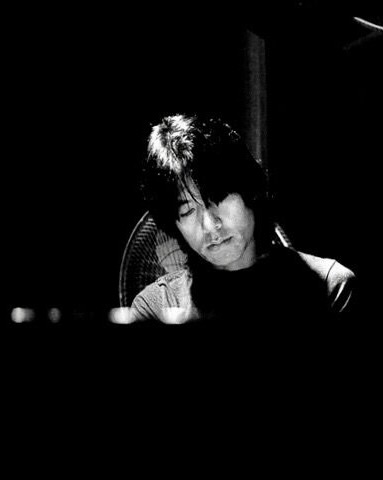Kigawa finds an expressive space within the cool control of Stockhausen

Late summer on the New York City classical music scene often means pianist Taka Kigawa will be exploring some of the most complex, nuanced, and challenging corners of the modernist piano repertoire in the Greenwich Village basement nightclub (le) poisson rouge.
His latest venture came Sunday evening with one of the most influential post-WWII composers, Karlheinz Stockhausen. Kigawa played three pieces from Stockhausen’s central Klavierstücke collection of pieces for the keyboard, numbers I, V, and X, and then after an intermission his important acoustic-electronic composition, Kontakte, in a duo with percussionist Chris Graham.
To reduce this program to one word it would be “control.” This is music from the period when the composer was formulating ways to determine every possible aspect of a musical event (pitch, volume, duration, even timbre) through means extrapolated from Schoenberg’s original 12-tone system. That means rigor but not coldness—there is deep musical and expressive thinking going on in these pieces, and Kigawa was often scintillating in bringing this out.
He played the Klavierstücke in their numbered order (though Stockhausen didn’t write them in that order), which was apt as the three grow longer in duration. The succinct I was the one outlier of the performance, as Kigawa sounded overly brittle, his attacks and articulation not connecting the subtle threads of phrasing.
Kigawa was superb with the following two pieces. Number V is a kind of nocturne, with a dreamlike atmosphere and sense of logic—the sudden changes from one mysterious sensation to another. This came out through his skill at the keyboard, which had beautiful thinking and touch. The pianist displayed his agility and musical sensibility to play rapid, gnarly configurations, manage broad leaps and sudden changes in dynamics, all under the umbrella of a large-scale legato while connecting all the elements into a clear, coherent form.
The challenge in number X is the long, dramatic silent gaps, the most difficult thing for a performer to express. Kigawa held these spaces calmly and firmly, and they were some of the most gripping moments of the night, the active tension of listening to his playing carrying over through the empty spaces. These were also the times when the limitation of the venue distracted from the experience, with the HVAC system kicking on noisily, or audible chatter coming over the intercom behind the bar.
The other long-standing problem at (le) poisson rouge is the sound. When it first opened, this was a pioneering space for new music happening in a nightclub. But the sound system has always had problems, as was shown with the amplified Kontatke (the prerecorded synthesized audio was handled by Adam Beard). This creates the acoustic effects that Stockhausen sought and also integrates the playing with the prerecorded audio.
Or at least it should. The audio is supposed to be in four channels surrounding the audience, but here it was just in the stereo PA at the front of the stage. The mix was poor in the first few minutes, the audio a little too loud so that it swamped some of the playing and also sounding completely separate, as if two different musical events were happening in different spaces in front of the listener.
But at about the three-minute mark, the music gets softer, and then everything lined up into an exacting, vibrant performance. Kigawa and Graham played with focus and relaxation—the pianist coming to the front of the stage to handle some gong duties—and one was lost in this mysterious, fascinating, haunting piece. Acoustic and electronic sounds flowed through and around each other, like miniature dramas of stalking, conflict, and peace. There is likely no real understanding of this piece, just experiencing it as a possible, and remarkable, aesthetic path. If the music didn’t surround the listener, one was at least lost in it.





